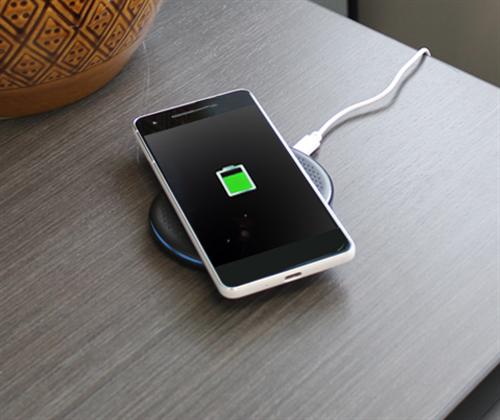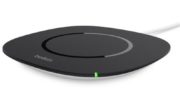Wires. There are a lot of folks out there who don’t like them. If the future could be completely wireless, it would be ok with them. Unfortunately, I think wires won’t disappear completely, but you certainly don’t need as many as you used to.
Wireless charging is here… get used to it
If you have a relatively modern mid-to-premium phone, your phone supports wireless charging. At Solid Signal we’ve been following this technology for about 15 years and it’s finally gotten really mature. If you’ve been holding off from using wireless charging, it’s time to get on the bandwagon. And, of course, Solid Signal can help.
How wireless charging works
Wireless charging is a specialized form of radio transmission. Using a large coil on the charger and a matching one on the phone, electricity flows from point to point. It’s not as efficient as using a wire, but it is a lot easier from a user perspective.
In order to keep everything safe, wireless chargers use special protocols to let them know when to turn on. Pretty much every phone out there uses some variant of the Qi wireless standard. This standard lets compatible equipment talk to each other safely. This is the standard that Apple, Samsung, and others follow.
The different levels of wireless charging
The first wireless charging devices were about half the speed of using the little cube charger from your phone. In other words, they weren’t very fast at all. Most devices today use the Fast Charge standard which gives you about the same performance as a cube charger. There are even faster wireless charging standards but not all phones support them. As a general rule if you want the fastest possible charge you should still be using a corded charger with a charging cable. But since most of us just put our phones down for the night, it’s ok that they charge a little more slowly.
Why wireless charging is slower
Wireless charging is going to be less efficient than charging using a cable. Even though the distance between the two coils is fairly small, it’s enough that a lot of the electricity dissipates. This means less current gets to the phone and therefore it charges more slowly.
It’s also been pointed out that since wireless charging is less efficient, it’s also worse for the planet. This is technically true. However the amount of current lost compared to a charging cable is so small that most folks don’t worry about it. Still, with millions upon millions of phones out there, it’s worth thinking about.
Get your wireless charger from Solid Signal
When you search the great selection at Solid Signal, you’ll find a wide selection of Qi-enabled devices. There are ones built into traditional alarm clocks, ones that let you face your phone so you can use it at your desk, and more. There’s even one that sticks to the phone so that your phone can charge easily even if you don’t have Apple’s MagSafe system. You can’t go wrong with these wireless chargers!





